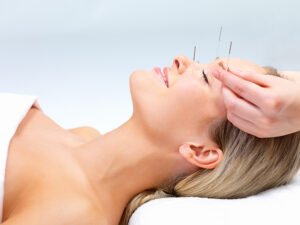Some tips to help you live better
By Deborah Jeanne Sergeant
Integrative health “brings conventional and complementary approaches together in a coordinated way,” according to the National Institutes of Health.
This can include multiple interventions in addition to conventional medicine. Integrative health is on the rise. According to www.goodtherapy.com, almost 69% of Americans use some form of complementary medicine in any given year.
The most popular modalities are (in order): massage therapy, chiropractic care, nutrition counseling, health and life coaching, acupuncture, reflexology, detoxification, B12 shots, acupressure and alternative healing, as listed on www.mindbodybusiness.com.
The growth in popularity is particularly notable considering many people pay for these services in full. Although chiropractic care is sometimes covered by health insurance, typically complementary modalities are out-of-pocket expenses.
The Buffalo region offers numerous integrative health modalities from a large variety of providers. Here are five of them:
• How it works: “We try to find the root cause and look at the person’s overall health constitution,” said Ariel Wachowiak, licensed acupuncturist, diplomate of oriental medicine, Chinese medicine practitioner and owner of Northeast Integrative Medicine in Buffalo. “Once we have that, we look at all the branch symptoms. We use a combination of herbs that will support each other in the formula and support the person’s health.”
• Why it works: It addresses the reason for the health issue, not only the symptoms.
• Caveats: “You have to be compliant and I think people can be challenged in doing so, especially when things are out-of-pocket and not covered by insurance,” Wachowiak said.

2. Acupuncture
• How it works
: “I slide a thin needle about the size of a strand of hair through the cells,” Wachowiak said. “I see a lot of patients for pain issues. My niche is chronic illness, so sometimes when people can’t figure out the Western medicine answer, they come here.”
• Why it works: “There are a lot of different theories as to why it helps,” Wachowiak said. “The one that resonates most with me is it works like a microtrauma. Where the needle is inserted, all the healing mechanisms, white blood cells, will rush to the area to make it become red and that’s the way the body is treating a cut.”
• Caveats: “People get a little squirrely thinking about needles but these are not like vaccination needles. They are so thin that they are not painful to use.”
3. Nutrition Counseling
• How it works: “I advise people on healthful diet,” said physician Sanford Levy, who practices integrative, holistic medicine in Buffalo as a board-certified physician in both Internal Medicine and Holistic Medicine. “The general principles are that a Mediterranean diet with a wide variety of fruits and vegetables—eat the darkest colors—a wide variety of whole grains, nuts and seeds, fish, extra virgin olive oil and limited red meat and refined foods.”
• Why it works: “This provides optimal nutrition.”
• Caveats: “It can be hard for people to stick with it.”
4. Preventive Care
• How it works: “When someone comes in saying, ‘What do you recommend for healthy aging?’ I say, ‘The foundation of healthy aging and preventive care is lifestyle and nutrition, exercise (a combination of weight training and aerobic exercise) and stress management,” Levy said. “I talk about optimal health, immunizations and screening.”
• Why it works: “It is tailored to the person, based upon individual health needs, family history and the patient’s health.”
• Caveats: “It’s easier said than done, but it’s important.”


